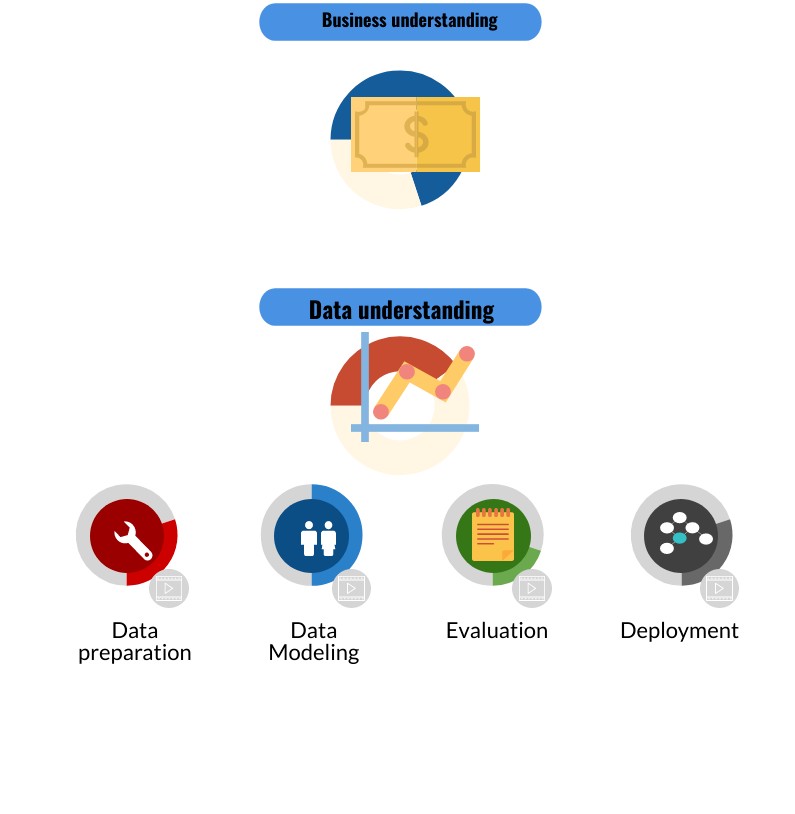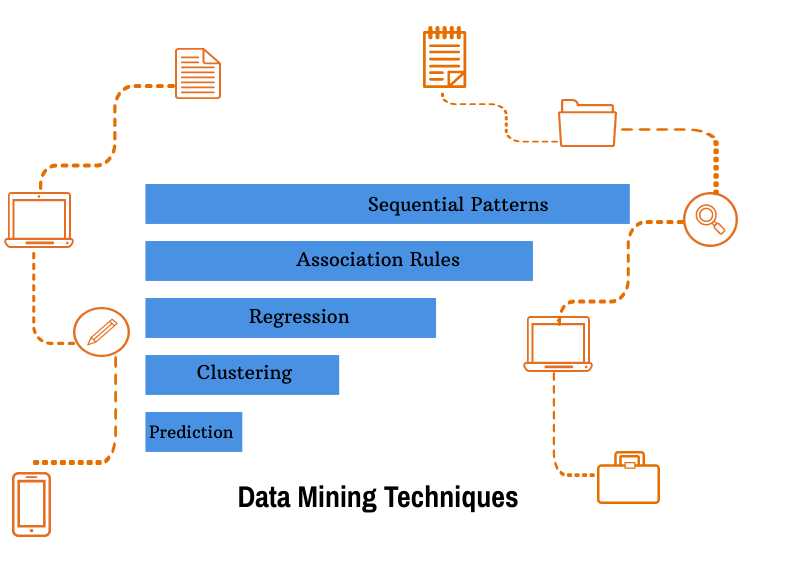Data mining, the process of extracting usable data from a larger set of raw data which lets us analyze data patterns in batches using different software. It is commonly used in a variety of fields, such as science and research. Business entrepreneurs can easily make use of data mining to learn more about their customers and to develop effective strategies for different businesses.
Data mining is one of the best data collection and storage strategies for approaches such as data segmentation, probability prediction and evaluation of future events. Sophisticated computational algorithms are the key backbones of this process.
Where we can do ?
- Relational databases
- Data warehouses
- Text databases
- Text mining and Web mining
- Advanced DB and information repositories
- Transactional and Spatial databases
- Heterogeneous and legacy databases
- Multimedia and streaming database
- Object-oriented and object-relational databases

How to implement Data Mining
There are different methods by which we can implement it effectively.
Business understanding
Good data mining strategy is very specific and can be designed to achieve both business and objectives. Mining of data can be applied to define and set your objectives in the project that will help you prepare and deploy various factors for better business.
Data understanding
In this stage, all the available data is collected using various visualization tools that will help business firms to achieve their objectives. There could be multiple data sources that may create issues such as object matching and schema integration while the data integration process is underway. Metadata will be used to reduce errors in the data integration process.
Data preparation
Preparing data takes time and effort in a project. The data must be assigned, cleaned, formatted and constructed based on our requirements. In the modern data mining process, the use of DBMS distributed systems to improve speed and reduce overload in a single system. The system is more secure and the chance for data loss is very low
Data Modeling
Mathematical models are used to identify different database patterns using advanced computer methods. It offers options for testing the reliability and validity of a model that can fulfils the objectives of it.
Evaluation
The results were analysed and applied to business objectives to determine whether they should be implemented across the business. The delivery of the design to the production phase will be determined here.
Deployment
In the delivery process, you deliver your data mining findings to regular business operations. The development of a detailed implementation plan for the production, maintenance, and monitoring of Its discoveries is carried out here. The final report of the project consists of lessons learned and key observations during the project. It helps to improve the business policy of the company.

Data Mining Techniques
Classification
The approach is used to collect relevant and important information on data and metadata. Classification of different data classes can be performed using different mining methods.
Clustering
Similarities of different data can be easily identified by clustering analysis in data mining. The full array of similarities and dissimilarities can be described by this method.
Regression
Regression analysis is the approach used to define and evaluate the link between variables. It gives the presence and identity of other variables.
Association Rules
This technique helps to establish a link between two or more items. Which provides hidden features of the data set.
Sequential Patterns
This approach over a period helps to identify and recognise similar patterns in transaction data.
Prediction
Proper analysis of past events and their sequence for future events. It used a mixture of other mining methods, such as trends, sequential patterns, clustering, classification, etc.
Benefits from Data Mining
Reduction of costs
The key value of data mining is the effective use of available resources. That makes the organization prepare and determine automatically, with complete accuracy, result in cost reduction. This will result in customer satisfaction through an enhanced system.
Automatic Decision-Making process
Delay in human judgment can be easily overcome by automated decision-making, which is a key feature of organizational data mining. These operating algorithms can be efficiently evaluated and act immediately on a decision-making event that eliminates the burden of process on the organization.
Consumer Preferences
Companies implement data mining systems from customer data to discover key elements and gaps between their clients. It can be used to create and customize every point of contact to increase overall customer satisfaction.
Summary
Data Mining which is all about understanding the past and predicting the future for various research analysis.It helps us to extract or mine the relevant information from a vast set of data.The technique involves market awareness, software awareness, data planning, modelling, development, implementation.Key data mining strategies include grouping, clustering, regression, association law, outer detection, sequential patterns, and prediction. It is being used in a variety of industries such as Software Development Services, Communications, Insurance, Education, Manufacturing, Banking, Retail, Service Providers, eCommerce, Supermarkets Bioinformatics for different purposes.




